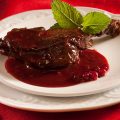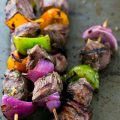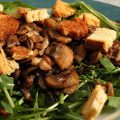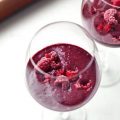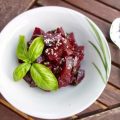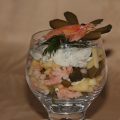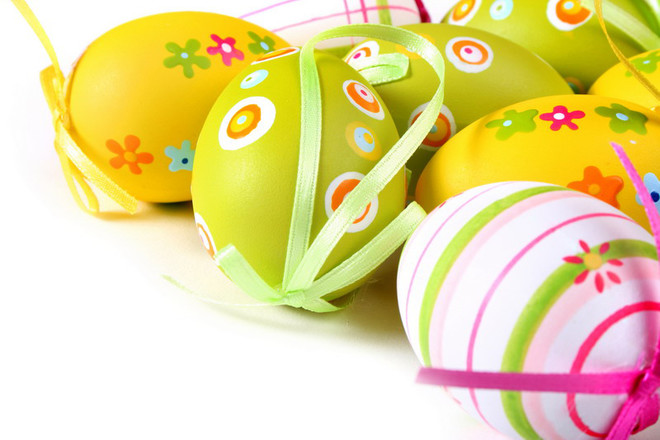 Photo: Photographs Archives1. Onion Husk Old Grandma's way. Depending on the amount of husk and the cooking time, the color of the resulting eggs can vary from sandy to dark chestnut. Before you put the eggs in the broth, the husk should be boiled for about half an hour. By the way, if you wrap the eggs with onion peel, securing it with thread, and then simply boil them in water - they will have an interesting marble pattern.2. Colored thread. Wrap eggs and boil as usual. As a result, get interesting color stains. Since it is impossible to assess the safety of the dyes, make sure that the eggs do not crack during cooking. Cracked in the food is better not to use. Shreds of silk Cook the eggs in water with the addition of soda. Wrap them in multicolored silk shreds, tie them with a thread. Boil the eggs again in the same water. Cool and remove patches. Vegetables fruits. You can use natural dyes of vegetables, fruits and berries. Eggs are boiled beforehand and only then rubbed with pieces of fruit (vegetables, berries) or dipped in juice / decoction. The exposure time depends on the desired color saturation and durability of the dye.
Photo: Photographs Archives1. Onion Husk Old Grandma's way. Depending on the amount of husk and the cooking time, the color of the resulting eggs can vary from sandy to dark chestnut. Before you put the eggs in the broth, the husk should be boiled for about half an hour. By the way, if you wrap the eggs with onion peel, securing it with thread, and then simply boil them in water - they will have an interesting marble pattern.2. Colored thread. Wrap eggs and boil as usual. As a result, get interesting color stains. Since it is impossible to assess the safety of the dyes, make sure that the eggs do not crack during cooking. Cracked in the food is better not to use. Shreds of silk Cook the eggs in water with the addition of soda. Wrap them in multicolored silk shreds, tie them with a thread. Boil the eggs again in the same water. Cool and remove patches. Vegetables fruits. You can use natural dyes of vegetables, fruits and berries. Eggs are boiled beforehand and only then rubbed with pieces of fruit (vegetables, berries) or dipped in juice / decoction. The exposure time depends on the desired color saturation and durability of the dye.
- Yellow color - turmeric (it can be added during cooking).
- Green - spinach decoction or juice.
- Purple - decoction of beets, beet juice.
- Orange - carrot juice.
- Pink - mashed strawberries, cranberry juice.
- Gray-blue - mashed blueberries or blueberry juice.
- Blue - decoction of red cabbage leaves (leave eggs for the night).
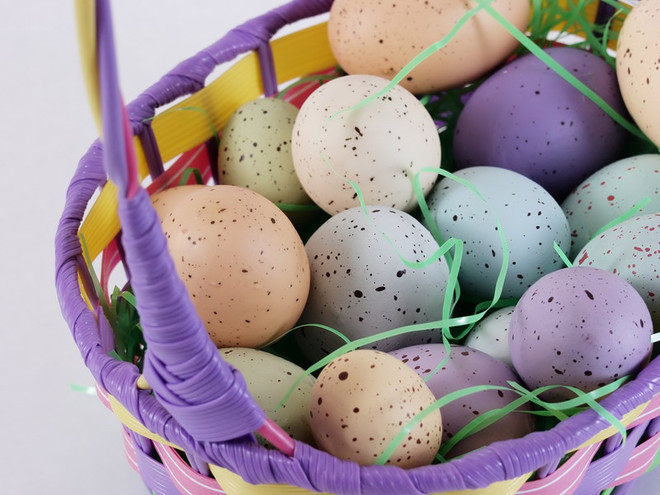 Photo: Photographs archives5. Birch leaves. A decoction of the young (or dry) will give the eggs a golden yellow hue. To do this, birch decoction is infused for about half an hour, then eggs are dropped into it, and the dishes are put on the fire. After the broth boils, the eggs are boiled for 10 minutes. Parsley leaves. Leaves of fresh greens can become a kind of stencil. To do this, lay out a beautiful drawing of small leaves on the egg or simply spread one leaf of parsley on the egg and gently place the egg in old synthetic golf (or old tights). Tie so that the leaves tightly fixed on the egg. After that, place the eggs in a decoction of onion peel. When you remove the eggs, they will remain picturesque white prints of leaves. Instead of parsley, you can use any other curly leaves that can be in your hands at the end of April. Fig. Using the previous method, you can get a different effect. Roll the wet eggs in rice, put in golf (or tightly wrap with gauze, tied edges) and cook in the husk. Eggs turn out brown in a white speck.8. Beads. Melt the paraffin candle and dip the egg into the liquid paraffin. After that, you can decorate the resulting "canvas" with beads. To do this, use a pair of tweezers to take one bead, heat it over the candle and attach it to the egg so that the bead is stuck. Thus, you can lay out any pattern on the egg. Figure needle. A graceful pattern can be applied to already painted eggs by scratching it with a needle. This requires accuracy and a firm hand, but the result is worth it. Watercolor. Offer your child a new canvas - let him paint a boiled egg with watercolors instead of a usual paper sheet. The baby will be able to present his creation as an Easter gift to his father or grandmother and grandfather. General recommendations
Photo: Photographs archives5. Birch leaves. A decoction of the young (or dry) will give the eggs a golden yellow hue. To do this, birch decoction is infused for about half an hour, then eggs are dropped into it, and the dishes are put on the fire. After the broth boils, the eggs are boiled for 10 minutes. Parsley leaves. Leaves of fresh greens can become a kind of stencil. To do this, lay out a beautiful drawing of small leaves on the egg or simply spread one leaf of parsley on the egg and gently place the egg in old synthetic golf (or old tights). Tie so that the leaves tightly fixed on the egg. After that, place the eggs in a decoction of onion peel. When you remove the eggs, they will remain picturesque white prints of leaves. Instead of parsley, you can use any other curly leaves that can be in your hands at the end of April. Fig. Using the previous method, you can get a different effect. Roll the wet eggs in rice, put in golf (or tightly wrap with gauze, tied edges) and cook in the husk. Eggs turn out brown in a white speck.8. Beads. Melt the paraffin candle and dip the egg into the liquid paraffin. After that, you can decorate the resulting "canvas" with beads. To do this, use a pair of tweezers to take one bead, heat it over the candle and attach it to the egg so that the bead is stuck. Thus, you can lay out any pattern on the egg. Figure needle. A graceful pattern can be applied to already painted eggs by scratching it with a needle. This requires accuracy and a firm hand, but the result is worth it. Watercolor. Offer your child a new canvas - let him paint a boiled egg with watercolors instead of a usual paper sheet. The baby will be able to present his creation as an Easter gift to his father or grandmother and grandfather. General recommendations




